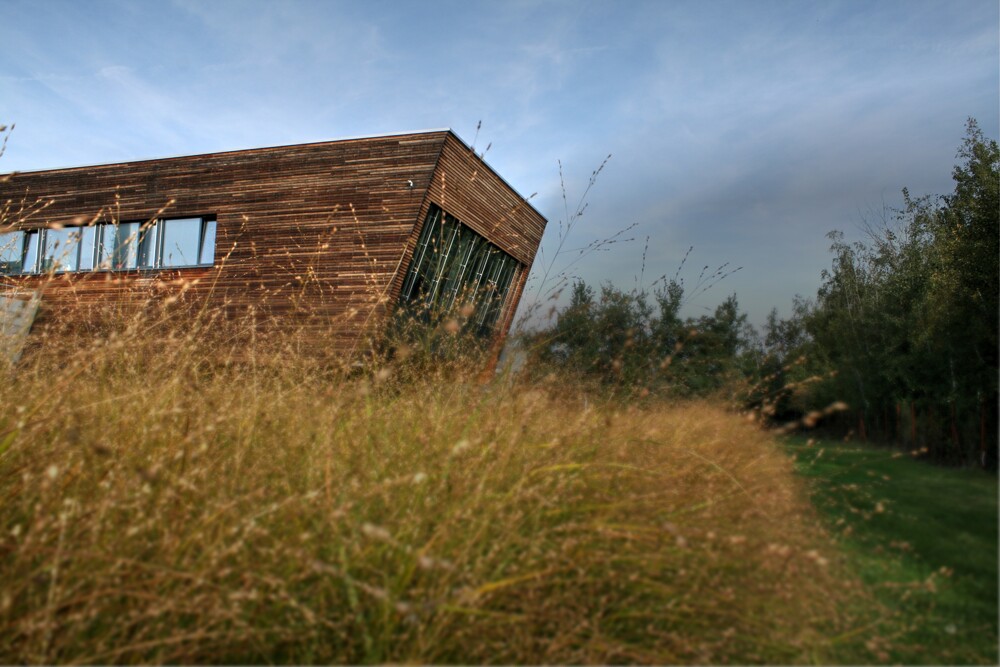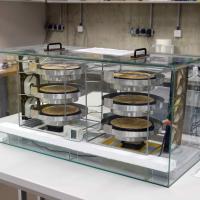

The University Centre for Energy-Efficient Buildings of Czech Technical University carried out laboratory measurements of the diffusion resistance of selected OSB boards in cooperation with Kronospan. The obtained data will make it possible to design the outer casings of modern wooden buildings in a more qualified manner and thus ensure their long-term moisture safety.
The perimeter skins of modern wooden buildings are nowadays more and more often realized as so-called diffusely open. This solution is based on the principle that a controlled amount of water vapor from the internal environment is allowed to penetrate into the structure, without causing an excessive amount of condensate to form on its cold side and endangering the moisture-sensitive materials used. The advantages of such a solution are a reduction in labor during execution (the structure does not contain a foil vapor barrier sensitive to the quality of the execution) and the ability to quickly regenerate the structure's moisture (e.g. faster drying of initial moisture introduced from wet construction processes).
Diffusion-open perimeter skins based on a light skeleton often contain an OSB board, which, in addition to the surface stiffening of the frame structure, also performs an airtight function (preventing the flow of moist interior air into the cold part of the structure) and a vapor barrier function (regulating the diffusion of water vapor from the moist interior air into the cold part of the structure). . However, the diffusion resistance factor of OSB boards, i.e. the material characteristic describing their diffusion properties, is still not mapped in sufficient detail. The situation is further complicated by the fact that it is not a constant, but a humidity-dependent function. This means that as the humidity of the boards increases, it decreases. Constant values usually used in engineering thermal-humidity evaluation can thus differ substantially from reality.
Therefore, the Building Thermal Technology Laboratory of the Czech Technical University UCEEB measured the diffusion resistance factor on a representative sample of wood chip structural boards (OSB) of the Superfinish and Airstop types produced by the Kronospan company. Measurements on both types of plates were performed at three humidity levels, both during adsorption and desorption. The result is moisture-dependent functions of the diffusion resistance factor of OSB boards.
Their validity was verified on two diffusely open perimeter wall compositions with OSB board in the role of vapor barrier. The verification experiment was carried out in a climatic double chamber, where both compositions were exposed to sudden changes in boundary conditions. The course of the experiment in the climatic double chamber was subsequently repeated numerous times with good agreement with the help of software for dynamic simulations of the thermal-humidity behavior of structures.
The research was supported by the Technology Agency of the Czech Republic as dílčí výzkumný projekt MTS within the project Národní centrum kompetence CAMEB.